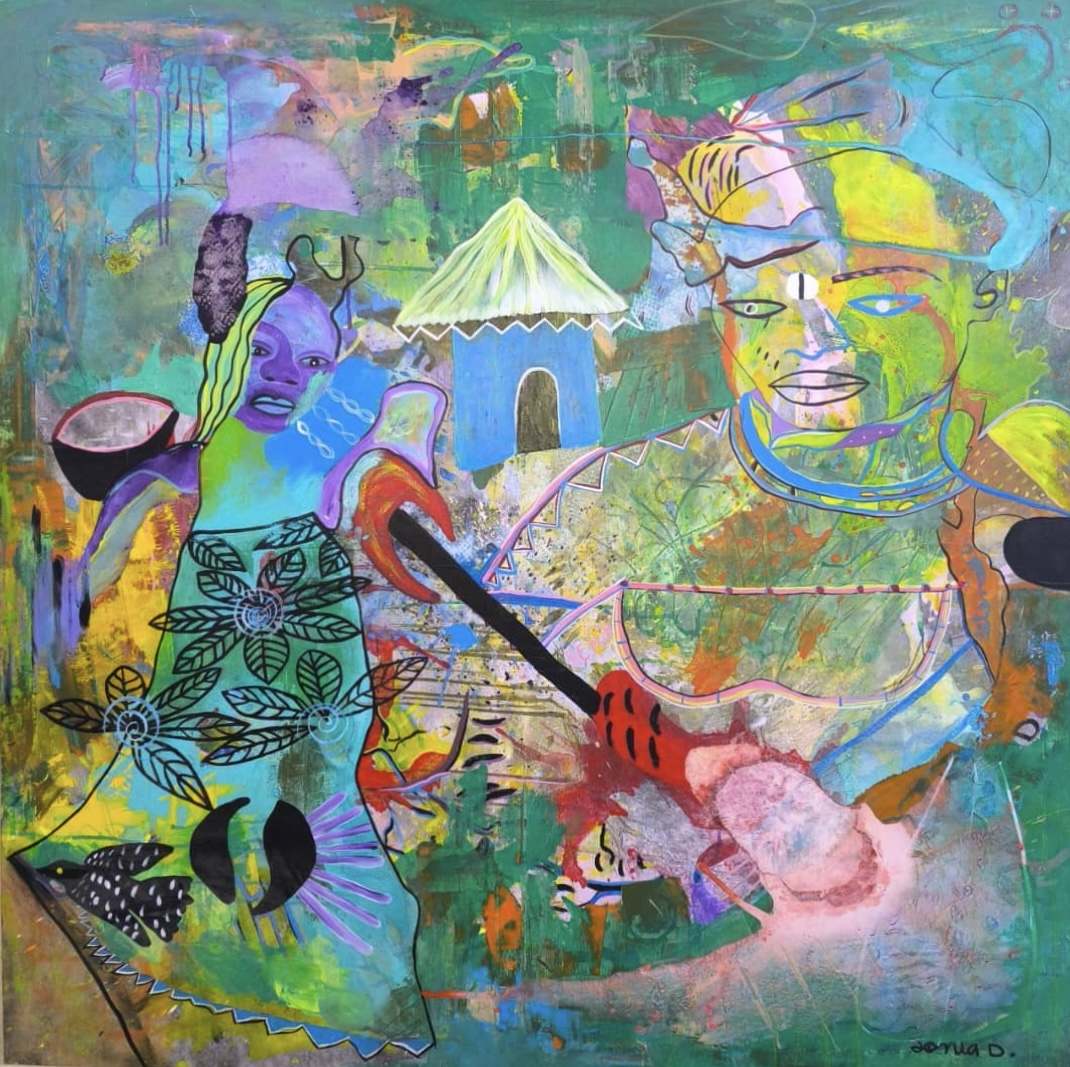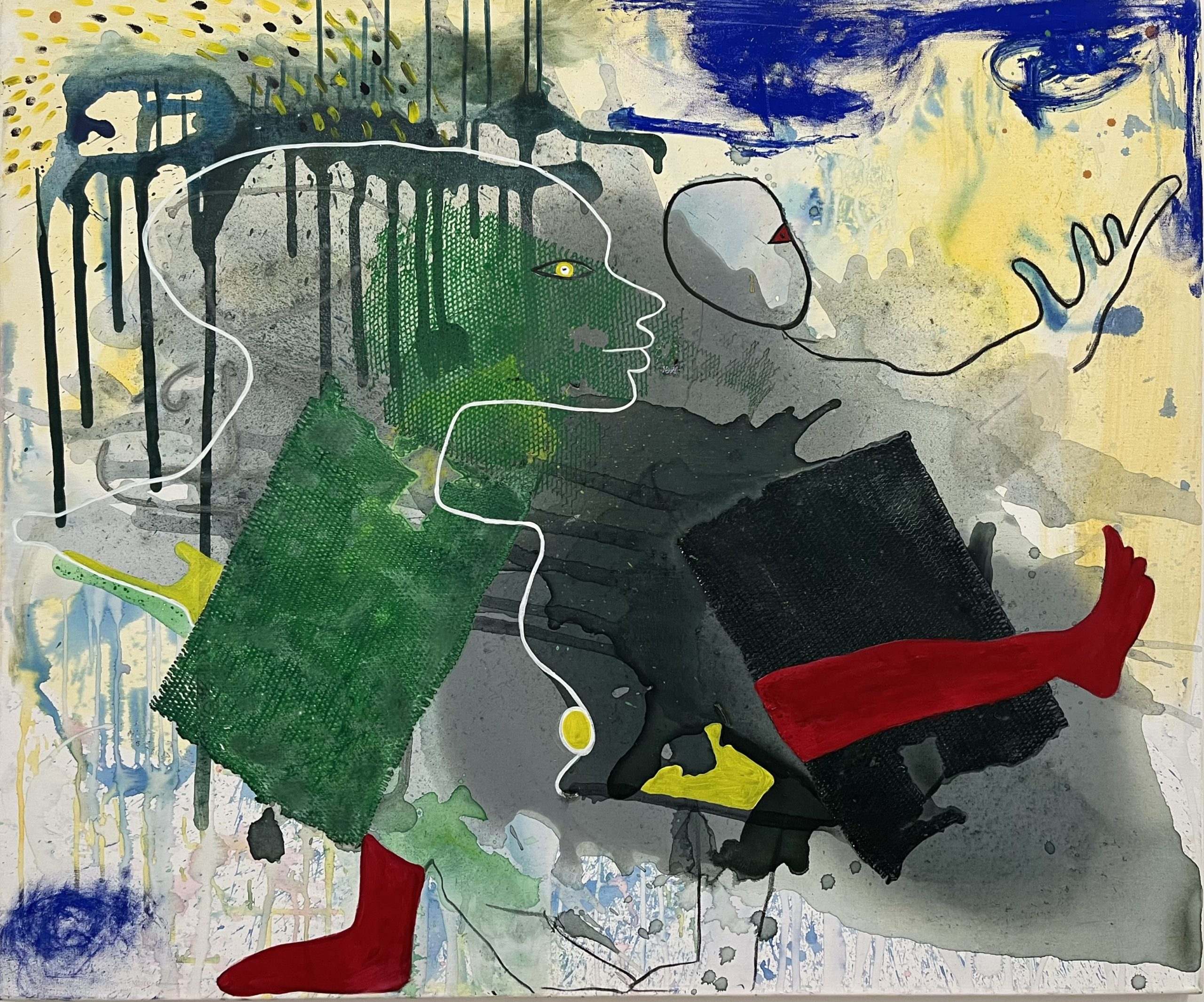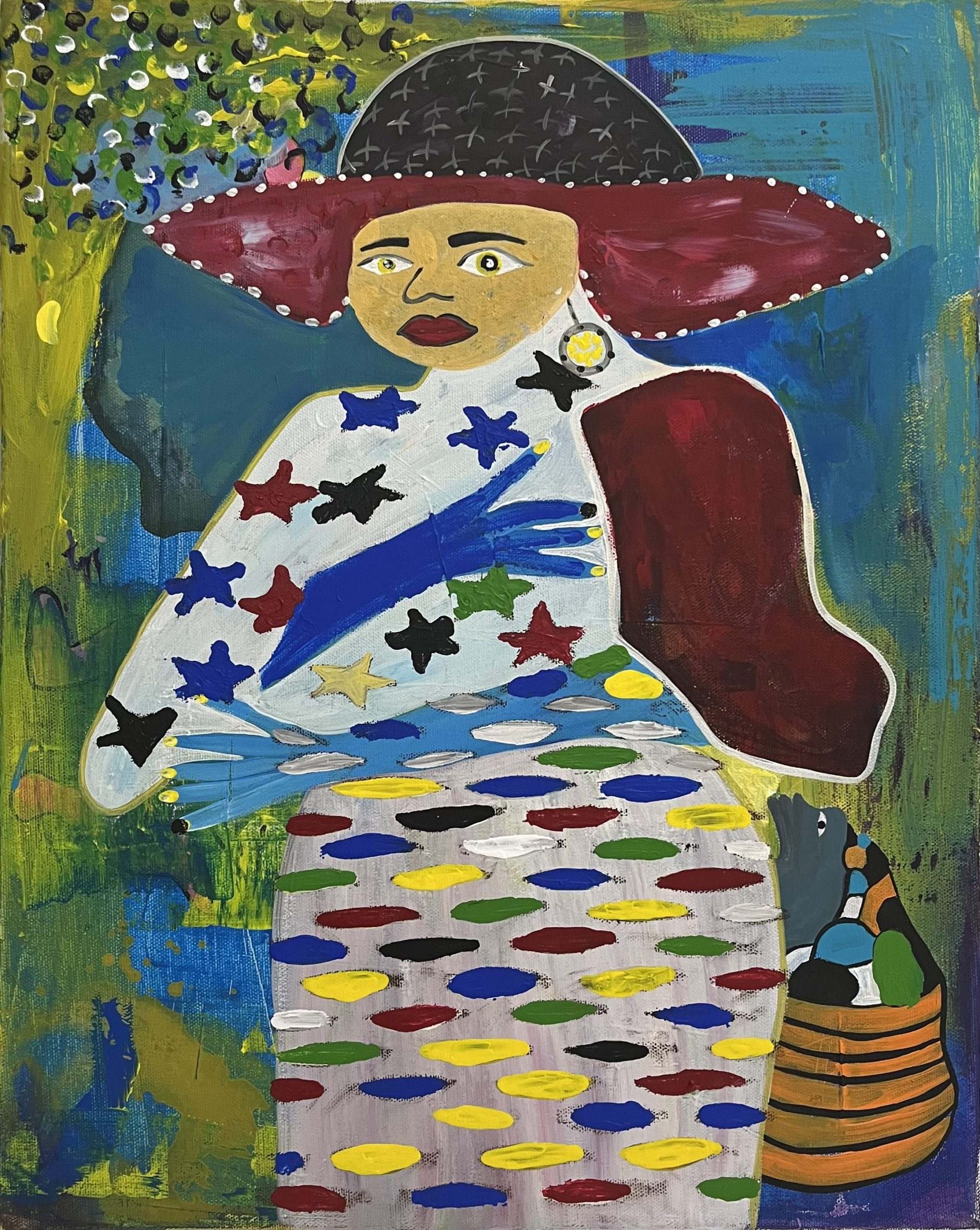Collection: Infusing life - Setonou Djedatin
Interested in one or more artworks from this collection?
By: Djedatin Setonou
large paintings, bright colours, mixture of reality and imagination
Sonia Setonou Djedatin is a Beninese visual artist who lives, breathes, feeds, digests, and paints the culture and traditions of the city where she was born: Abomey. Voodoo manifests itself and is present in Djedatin's metaphorical universe, although she does not practice it as a religion. She draws on the ancestral values and imagination of her city, which resisted colonization, to create works deeply rooted in her region of origin.
Djedatin discovered Frida Kahlo's The Frame (1938) at the Centre Pompidou during her first visit to Europe in 2023—a decisive encounter. Since then, she has regularly observed and studied Kahlo's work, which feeds into her own artistic research. The two share biographical and creative affinities: both self-taught, they paint elements from the traditional culture of their countries of origin, flatten the pictorial space to assert the surface as a place of autonomous expression, and use a vibrant color palette.
In addition, Djedatin uses techniques borrowed from American abstract expressionism, particularly gestural abstraction and dripping. “I often paint directly on the floor. This allows me to be free in my movements and closer to the material,” she says. She maintains a lively relationship with her works, which “speak to her” and tell her what meaning to give them, what material to apply to enrich their texture. The hair of the Vodoun practitioner Houegbonou was created using an organic sponge. By layering textures, patterns, and gestures, the artist constructs landscapes inhabited by human presences, where power and fragility intertwine in a shared quest for meaning, identity, and transmission.
In her interpretation of Yebiosso, the god of thunder, Djedatin makes a major symbolic shift: she chooses to represent this celestial power in the form of a woman. Far from being a simple gender transposition, this reversal opens up a space for reflection on creative force and the multiplicity of energies. By feminizing the god of thunder, the artist transforms her painting into a place where the feminine embodies power, transformation, and the light of the world.
In her paintings, figures emerge from a tumult of colors and signs. They arise from a material in motion, where the pictorial gesture becomes breath, where the line seeks the memory of the body. The artist weaves a dialogue between the visible and the invisible, between legacies and inner presences.

Houegbonou (2023)
Setonou Djedatin maintains a lively relationship with her works, which “speak to her” and indicate the meaning to give them, the material to apply to enrich their texture. The hair of the vodoun practitioner Houegbonou was thus created using an organic sponge. By superimposing textures, patterns, and gestures, the artist constructs landscapes inhabited by human presences, where power and fragility intertwine in the same quest for meaning, identity, and transmission.

Vodoun Yêbiosso (2024)
In her interpretation of Yebiosso, the god of thunder, Djedatin makes a major symbolic shift: she chooses to represent this celestial power in the form of a woman. Far from being a simple gender transposition, this reversal opens up a space for reflection on creative force and the multiplicity of energies. By feminizing the god of thunder, the artist transforms her painting into a place where the feminine embodies power, transformation, and the light of the world.
Please send us a message below or pick another communication option below.
Phone us
Phone: 0041 (0)79 467 84 86
Write us
E-mail: info@gallerybrulhart.ch
Find us
Rue des Vollandes 21
1207 Genève
Copyright 2021 Gallery Brulhart © All Rights Reserved





